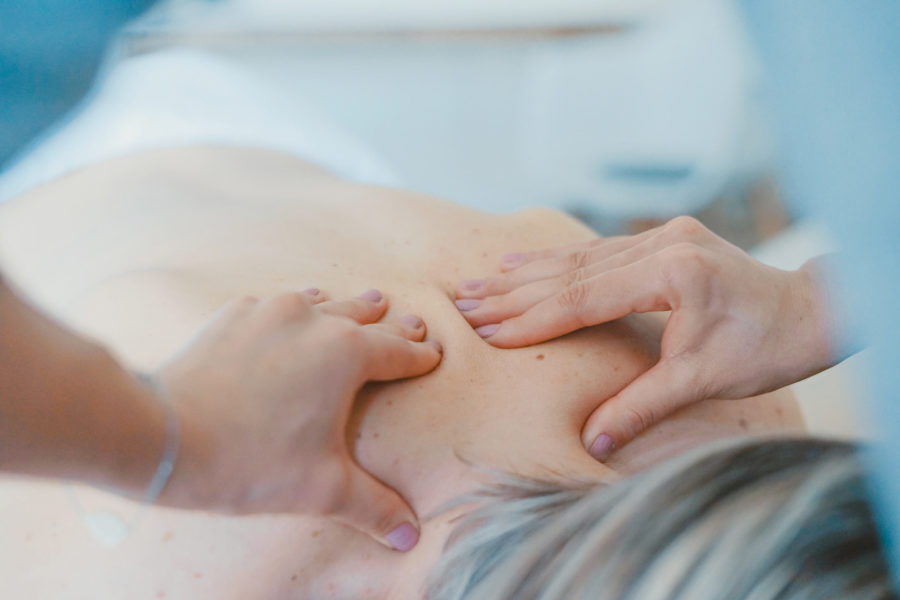You might think of a massage as an occasional pampering indulgence that isn’t essential.
It’s true, massages can be pricey. In the Boston area, a one-hour massage at a massage franchise will usually tally about $100 (including tip). Posh spas or in-demand massage therapists can double that.
But, if you’ve ever been the recipient of a massage that nixed a need for major surgery, you understand that massage is essential to your health and wellbeing, and it’s worth every penny.
I became a proponent after I randomly booked a massage while vacationing in Arizona, days before a top Boston surgeon was due to surgically fix my malfunctioning left knee. The massage therapist avoided my knee, but noted other areas that could be contributing to my knee problems. I entered her domain unable to straighten my leg or walk without doses of ibuprofen; an hour later I left with full range of motion and much less pain.
Back in Boston, I cancelled my surgery and found a licensed massage therapist (along with surgeon-prescribed physical therapy) to continue what that talented Arizona therapist began.
My experience isn’t unique. Among the researched therapeutic benefits of massage are:
- Stress reduction that calms raging “fight or flight” stress hormones like cortisol, restoring balance to the body’s systems such as sleep
- Relief from back, neck and headache pain (reducing migraines)
- Improved range of motion and reduced Osteoarthritis symptoms
- Reduced cancer-treatment symptoms, including lymphatic drainage following surgery
- Increased vascular circulation and healing to injuries or scar tissue
- Release of nerve compression, including carpal tunnel and sciatica
- Reduced symptoms of depression
Pro athletes need massage to break up tissue and increase blood flow that speeds muscle recovery. Everyday activities can cause the same, if more slowly developing, need.
“If someone comes in with a stiff neck from sleeping, I work on specific muscles, ending with heat and stretch,” says Patty Spatz, a certified massage therapist based in Bradenton, Florida. “When one part of your body is in pain other muscles overcompensate; before you know it, one whole side of your body can be affected.”
Massage is also a key component of physical therapy. “When a patient in pain comes to PT, massage can help desensitize the area in preparation for therapeutic exercise,” says Lorna Hayward, Northeastern University professor, PT, Ed.D., MPH. “Sometimes muscle pain indicates an underlying emotional concern. Through therapeutic touch, we can talk to our patients and learn about the root causes of pain, which can be incorporated into a holistic patient approach.”
How to Choose the Right Type of Massage for You
There are dozens of types of massage therapy, and many therapists use more than one style to customize a massage depending on a client’s age, condition or goals.
Primary types of massage in Western medicine include:
- Swedish massage involves soft, long, kneading strokes, as well as light, rhythmic strokes on the topmost layers of muscles.
- Deep-tissue massage uses slow, deliberate strokes that focus more intense pressure on layers of muscles, tendons, or other painful or stiff, deep-tissue areas
- Sports massage uses a variety of approaches to help athletes with flexibility to prevent injuries, or aid in muscle and nerve recovery
- Medical massage is intended to resolve problems that have been diagnosed by a doctor using a variety of massage techniques
Choose a licensed massage therapist (or other certification for specialized sports massage) to ensure that your therapist has completed a minimum of 650 hours of education and practical training (Massachusetts licensing requirements).
Do some homework to check out a therapist’s experience, and then speak with the therapist directly to explain what you are looking for and discuss whether they’ll be the best fit for you.
Then, go and enjoy, guilt-free.



 3 min read
3 min read


